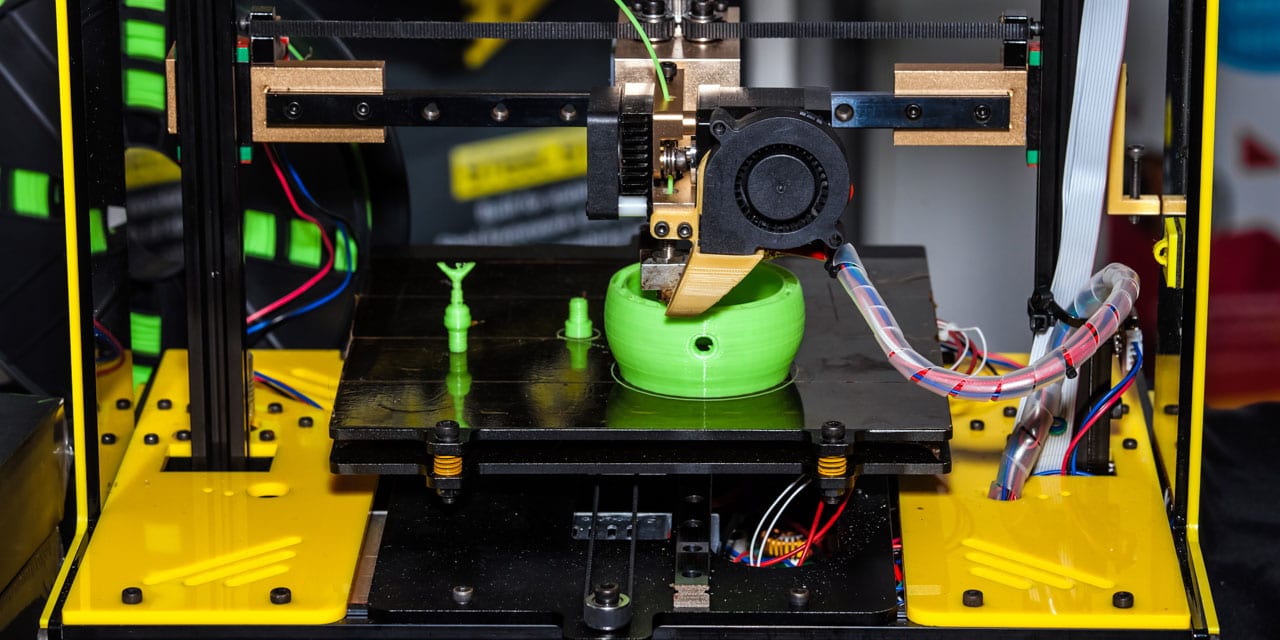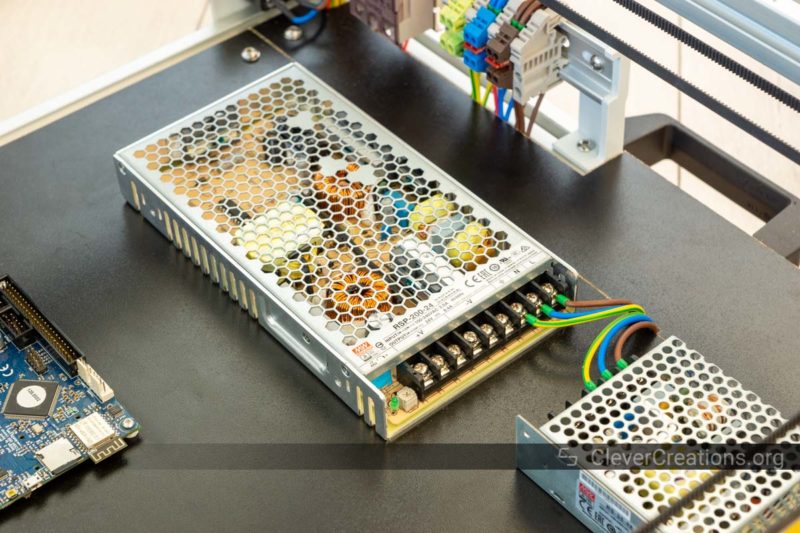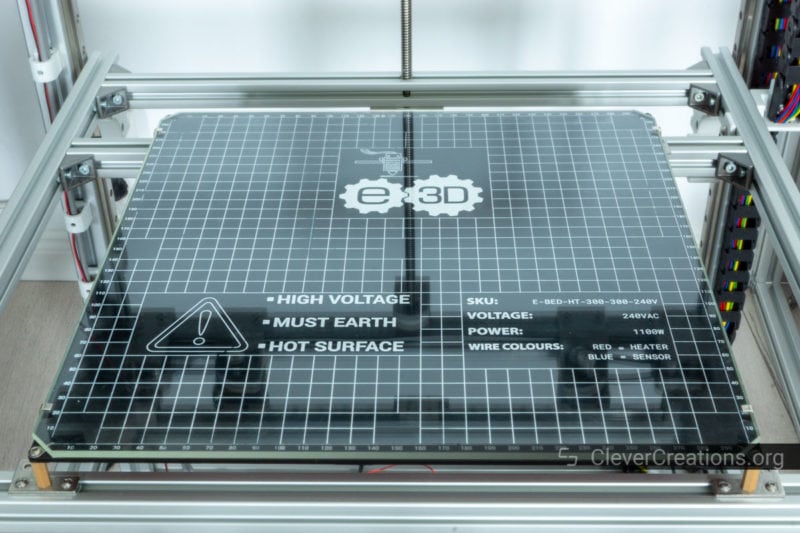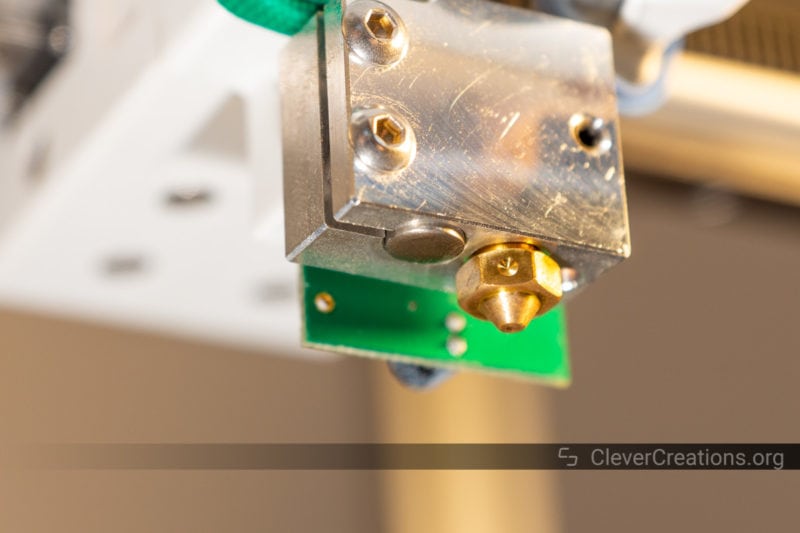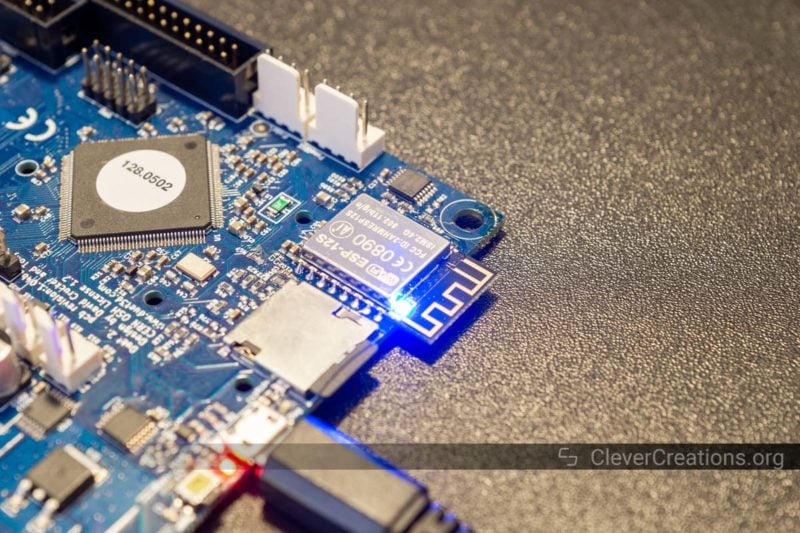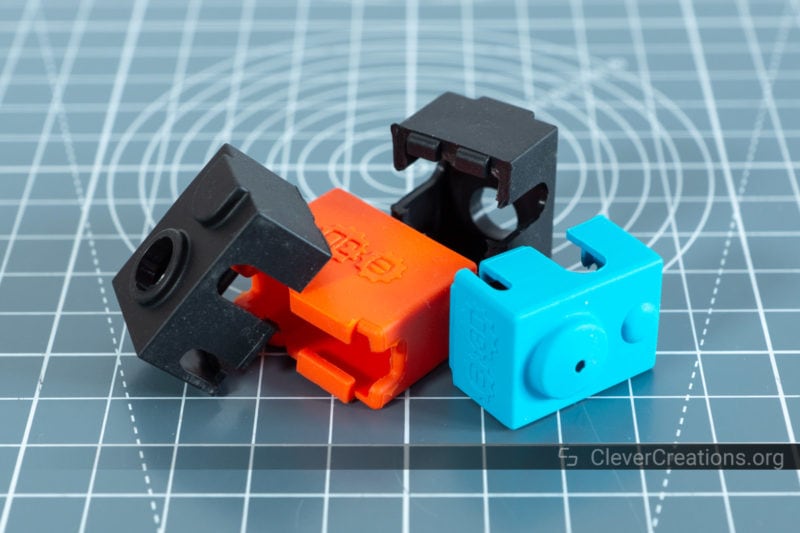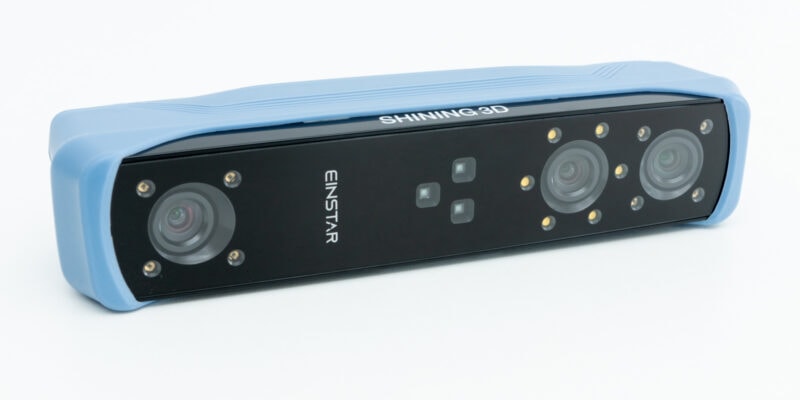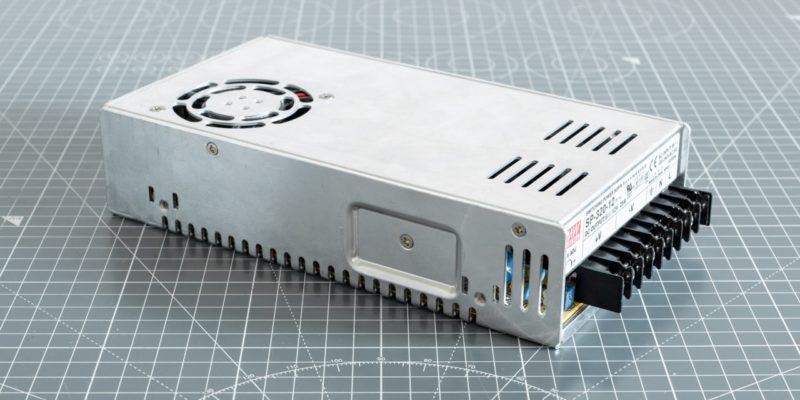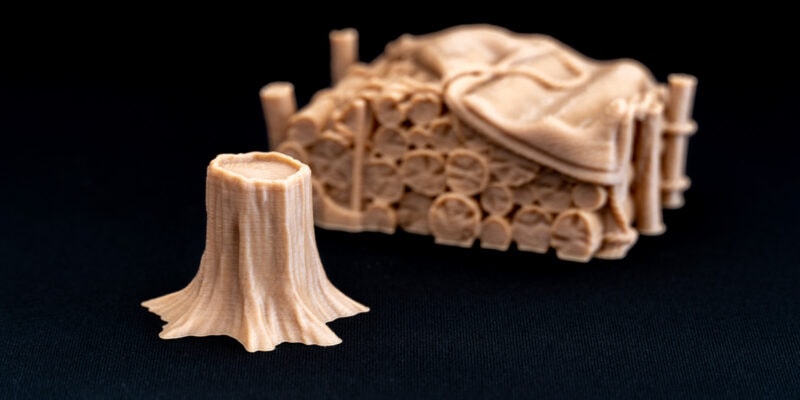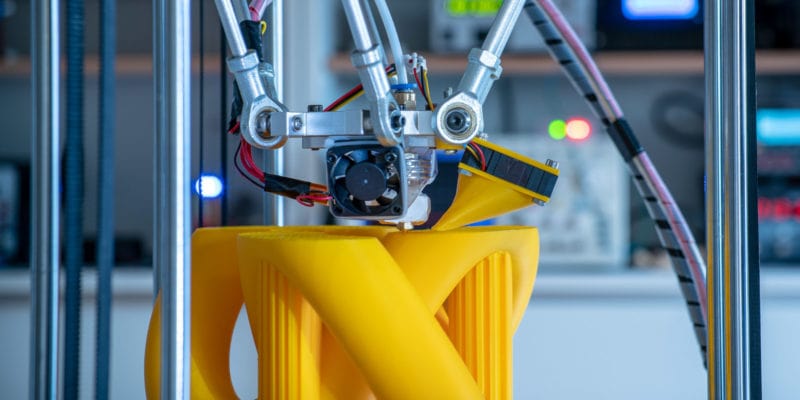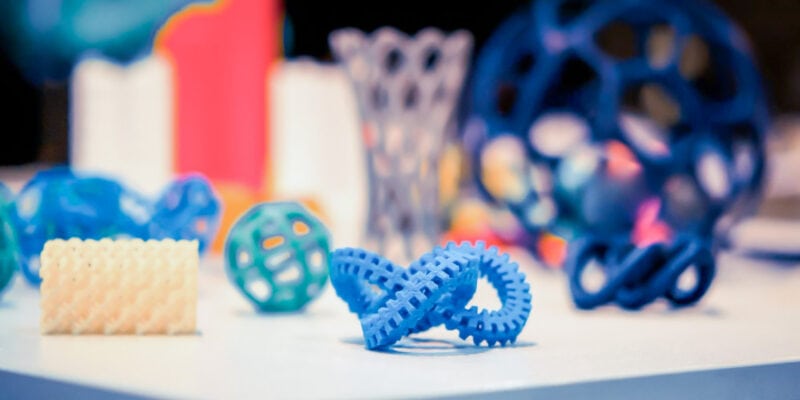When deciding on whether 3D printing is the right hobby for you, it is important to take all 3D printing costs into account. Not only are there initial expenses you have to make, like filament and the device itself, but you also have to consider recurring costs.
One of the main operating expenses of a 3D printer is its power consumption. Without power, there won’t be any heating, motor movement and printing, so this cost is hard to avoid.
In this article, I will share how much electricity 3D printers typically use, how you can calculate the electricity cost and give you some tips on keeping energy usage of your 3D printer as low as possible.
3D printers come in many different shapes and sizes and this makes it impossible to give a single power consumption number that covers all models. There are simply too many variables (components) in play.
Luckily, there are several ways you can go about calculating the power consumption of a 3D printer. Some methods are easier than others, but like with many things, the more effort you put in, the better the results. Note that this article covers fused deposition modeling (FDM) 3D printers only.
Using the 3D Printer Power Supply Rating
All 3D printers have a power supply that converts high voltage AC (alternating current) to low voltage DC (direct current). This power supply has a maximum rating that it is unable to exceed. With that rating in mind, we can figure out the absolute maximum amount of electricity that a 3D printer can use.
For example, an Ender 3 V2 has a power supply that can supply 24V, 15A. To calculate its maximum power consumption, we use the formula Power = Current * Voltage to get 15A * 24V = 360 Watts.
The real electricity usage of a 3D printer is a bit more complicated, however. The number we just calculated is the absolute maximum amount of power the PSU (power supply unit) can supply, whereas in reality a 3D printer never requires the PSU to be at full load.
3D printer power supplies are usually picked with a safety margin in mind (they can provide more power than the 3D printer would ever need) and the printer’s individual components rarely all operate at full power at the same time either.
In the absence of a better calculation method, using the power supply rating is a good way to get an idea of the upper bound of a 3D printer’s power consumption. But to get a more precise number we need to dive a bit deeper.
Taking the Individual Components Into Account
A better way to determine how much electricity a 3D printer uses is to calculate it based on its components. The power of the hot end heater, number of stepper motors and whether or not the printer uses a heated bed are some factors that influence the printer’s total power consumption.
It is important to mention that these components do not run at a 100% power all the time. For example, heaters regularly toggle on/off depending on their current temperature. But looking at the typical power usage of these components can give a good idea of how much electricity a 3D printer uses on average.
Heated Print Bed
Heated beds are by far the most energy-hungry components in a 3D printer. Not all printers have one, but the ones that do, use significantly more power.
A heated bed helps prevent warping of 3D prints and improves adhesion of the first print layer. It is an essential feature to have when working with specialized or high-temperature filaments, even though it is a good feature to have for standard filaments as well.
Both the size of the heated bed and the temperature you raise it to, attribute to its power consumption. The bigger the bed, the more power it uses. Higher temperatures need more power as well.
A heated bed needs a lot of energy to get up to temperature, but it also needs energy to stay there. Ample heat escapes through its large surface area. To maintain a heated bed’s target temperature, its thermal energy needs to be continually replenished by converting electricity to heat.
Typical wattages range from 120W for a small 20x20cm DC powered heated print bed, to 1000W or more for larger (≥30x30cm) AC powered beds. On popular printers like the Ender 3 Pro and Creality CR-10 you can find heated beds that draw around 200W.
On two equally sized heated beds with different wattages, the one with a higher wattage gets up to temperature quicker and can reach higher temperatures.
Further down in this article you can find some tips on how to reduce the energy usage of your heated bed and 3D printer.
Hot End Heater
The hot end heater is responsible for melting our filament and tends to be the second-most energy consuming component in a 3D printer.
Just like a heated bed, the power consumption of a 3D printer hot end heater cartridge depends on the temperature that it needs to reach. That, in turn, depends on the feedrate and the type of filament you are printing. Filaments like PLA do not require much heat, whereas PEEK or PETG need significantly more.
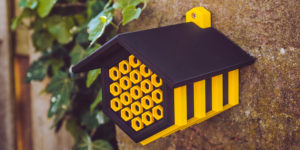
Pushing large amounts of plastic through a hotend, like on a Volcano hotend, increases power requirements. This is because more heat gets transferred from the heater block to the filament and needs to be replaced. Similarly, print cooling fans that are pointed directly at the hotend also increase the amount of power that a hotend draws.
Typical 3D printer hot end heaters are rated at 30-50 Watts. Anything higher than that comes with significant risks.
Stepper Motors
The stepper motors in a 3D printer are responsible for extruding filament and for moving the extruder carriage. Sometimes they also move the bed.
A typical Cartesian or CoreXY 3D printer has four stepper motors (X-/Y-/Z-axis + extruder), but some printers come with more. These extra stepper motors are used for additional extruders or sometimes to drive the Z-axis with more control.
Ordinary NEMA17 stepper motors use about 5-10 Watts each when active.
Control Board
3D printer control boards are responsible for controlling all other electrical components. They instruct the stepper motors on how to move and turn heaters on or off depending on the current temperature of the temperature sensors.
Control board PCBs have large terminals that can handle a lot of power. Don’t be fooled by these, only a small portion of that power goes to the controller itself. The majority is for powering the aforementioned stepper motors and heaters. The control board simply points that power into the right direction with MOSFETs and transistors.
When isolating the controller, you will find that it only uses 5-15 Watts. Its power usage is highest when the 3D printer is printing and lowest when it is idle (not doing anything).
Other Components
Aside from the main 3D printer components listed above, 3D printers can come with several smaller parts that use electricity.
- Fans are used for cooling prints, the hotend heatsink and the electronics. They do not use much power. Depending on their size, they use 1-2 Watts each.
- Some 3D printers come with LED strips, even though you can also install them yourself at a later point. LED strips use about 5-15 Watts per meter. High quality bright LED strips use more electricity than your typical AliExpress/eBay variant.
- LCD screens are a source of 3D printer power consumption as well. The energy usage of a small monochrome LCD is not worth mentioning, whereas something larger like a 7″ PanelDue touch screen still only uses 3-4 Watts at the most.
Adding It All Together
For a typical budget 3D printer, say an Ender 3 or Creality CR-10 with a ~200 Watt heated bed, you would see the following power consumption numbers:
| 3D Printer State | Power Consumption |
|---|---|
| Off | 0 Watts |
| Sitting idle | 5-15 W |
| Idle with motors engaged (e.g. after homing) | 20-40 W |
| Preheating after homing | 250-300 W |
| Printing | 50-150 W |
Once the heaters are up to temperature, they require less energy to keep them at that point. So during printing, electricity usage is significantly lower than when it is preheating.
Measuring Electricity Usage on a Specific 3D Printer
Of course, the above numbers are still all estimates. There are many different printer models out there and it is hard to say exactly what a 3D printer’s energy consumption is unless you specifically measure it. The target temperatures of the heaters, ambient temperature and stepper driver currents all can not be accounted for in these estimates.
The easiest way to measure 3D printer power consumption is to use a Kill-A-Watt electricity usage monitor. It precisely tracks the energy usage of the device that is plugged into it and even calculates the total electricity cost per day/month/year.
Alternatively, a Wi-Fi smart plug with energy monitoring lets you do the same thing but adds the ability of displaying its data remotely on your phone.
Calculating the Electricity Cost of Your 3D Printer
After figuring out how much energy your 3D printer uses, you can calculate the electricity cost. In this calculation, there are three numbers that are relevant. The first is the energy usage (measured in Watts), the second is the price of electricity in your area and the last is the number of hours you run the printer.
Taking a 3D printer energy usage of 100 Watts while printing (a good estimate based on our earlier calculations) and an electricity price of $0.13 per kWh (the current US average) gives an hourly cost of 1.3 cents an hour (0.1 kWh * $0.13/kW = $0.013).
So for a print that takes two-and-a-half hours, you end up with a total electricity cost of 2.5 * 1.3 = 3.25 cents. Not much.
Knowing the energy cost, you can calculate how much to charge for 3D prints if you decide to sell them. There are other costs involved as well, of course, like that of filament and wear and tear on the machine.
Comparing 3D Printer Power Consumption to Other Devices
If all these numbers are a bit too abstract, it can be helpful to compare them to those of other appliances in and around your home. A bit of context typically makes energy consumption easier to understand.
| Appliance | Energy Usage |
|---|---|
| 46 Inch LED TV | 60-70 Watts |
| Incandescent light bulb | 60-100 W |
| 3D printer (while printing) | 50-150 W |
| Typical desktop computer | 100-450 W |
| Inverter air conditioner | 1300-1800 W |
| Space heater | 2000-5000 W |
As you can see in the table above, the power consumption of a typical 3D printer is not that much compared to other household appliances. And based on the calculations we did, you know that electricity costs are fairly negligible if you only run the printer for a couple hours a day.
It might be a different story if you have a beast of a 3D printer that runs 24/7, but for something like an Ender 3, the electricity cost is for most people nothing to worry about.
How to Reduce the Power Consumption of Your 3D Printer
While ordinary 3D printers do not use much energy, it can still be a good idea to reduce power consumption as much as possible. Not only does this lower electricity costs further, but it also comes with secondary benefits such as reduced warm-up time.
Allow me to explain.
Most power consumption reduction methods are centered around keeping as much heat in the (components of the) 3D printer as possible. Less heat escaping means that more energy can be put towards raising the temperature. As a result, well-insulated components reach their target temperatures quicker and are able to reach higher temperatures.
These are the most common methods you can use to make your 3D printer more efficient.
Adding an Enclosure to Your 3D Printer
3D printer enclosures reduce energy usage by trapping heat inside, but they also provide additional benefits. For example, the heated chamber they create prevents warping of filaments (useful for ABS filament, for example), they keep potentially harmful 3D printing fumes inside, and they reduce the sound levels of your 3D printer.
Enclosures are fairly easy to construct. If you look online, you can find many tutorials that show you how to make an enclosure from IKEA furniture or simple wooden frames. Alternatively, you can just buy an aftermarket enclosure for your specific printer online.
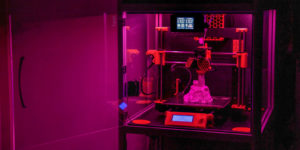
Even better would be to buy a fully enclosed 3D printer from the start, but these are more costly than your typical open-frame 3D printer with the same build volume. While the reduction in power consumption certainly won’t make up for this price difference, the other benefits of the enclosure might.

Insulating the Heated Bed
As you now know, a 3D printer’s heated print bed is responsible for the majority of the printer’s power consumption. Its large surface area allows for a lot of heat to escape to the surrounding air. Print cooling fans continuously blowing over its surface do not help either.
A good way to reduce the energy consumption of a heated bed is to cover its underside with a layer of insulation material. Good options are a self-adhesive aluminum insulation mat or a cork sheet. Both materials are capable of handling the highest temperatures that heated beds can reach.
You will find that afterwards the bed heats up a lot quicker than before. With less energy escaping to the surroundings, there is much more power available to get the bed up to temperature. Especially beds powered by DC current (from the 3D printer power supply) can benefit from this, as they tend to be underpowered.
Insulating the Hot End
Hot end heating elements have an equally difficult job at staying at the right temperature. While they do not have a lot of surface area, they do need to continuously pump energy into filament and deal with cool air from print cooling fans drawing away heat.
Adding insulation is the best way to reduce energy usage of a hot end. There are several off-the-shelf products available that do this. You can find the most popular ones as silicone nozzle covers or silicone socks.
Reducing Print Time
Another way of reducing 3D printer power consumption is to simply reduce the amount of time that 3D prints take up. You can do this by increasing printing speed, reducing infill, using faster infill patterns or printing with thicker layers.
For example, while the hexagonal/honeycomb pattern is the strongest infill pattern, it also takes a long time to 3D print. Unless you specificially need its strength or aesthetics, it is often better to go for something simpler and faster to print.
These measures do come with sacrifices (decreased print quality, less strength in 3D prints), so setting these up is a matter of finding the right balance. If you want both a high printing speed and high quality prints, a CoreXY 3D printer can be a great option for you.
Conclusion
Ordinary 3D printers do not use much electricity, only about 50-150 Watts while printing. This is about the same as one or two incandescent light bulbs. There are many different 3D printers and print settings available, however, so for a more accurate number you need to make some calculations or measurements.
There are several methods you can go about calculating the electricity usage of a 3D printer. One of the quickest ways is to look at the power supply rating. This does not give you an accurate number, however, only an absolute maximum. For a more precise estimate, tallying the power consumption of all electrical components works better.
To figure out the exact amount of electricity a specific 3D printer uses, you need to use a device like a Kill-a-Watt or a Wi-Fi smart plug. These give you a 100% accurate measurement and remove any guesswork.
Once you know how much power your 3D printer uses, you can combine it with local price of electricity to figure out the hourly cost of running your printer.
If you want to lower a 3D printer’s power consumption, you can insulate its heat generating components to save on electricity. Enclosing the entire printer in an enclosure is a good solution too.
